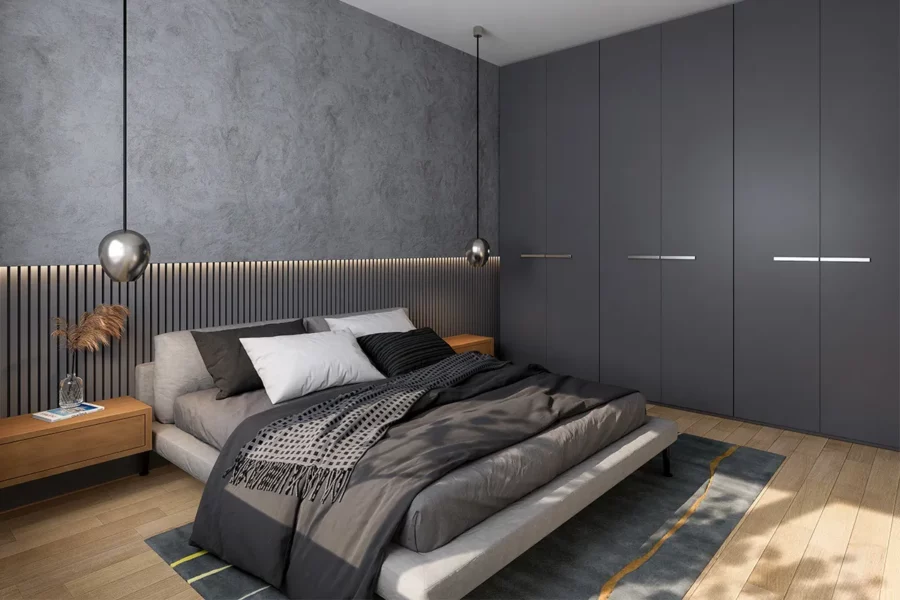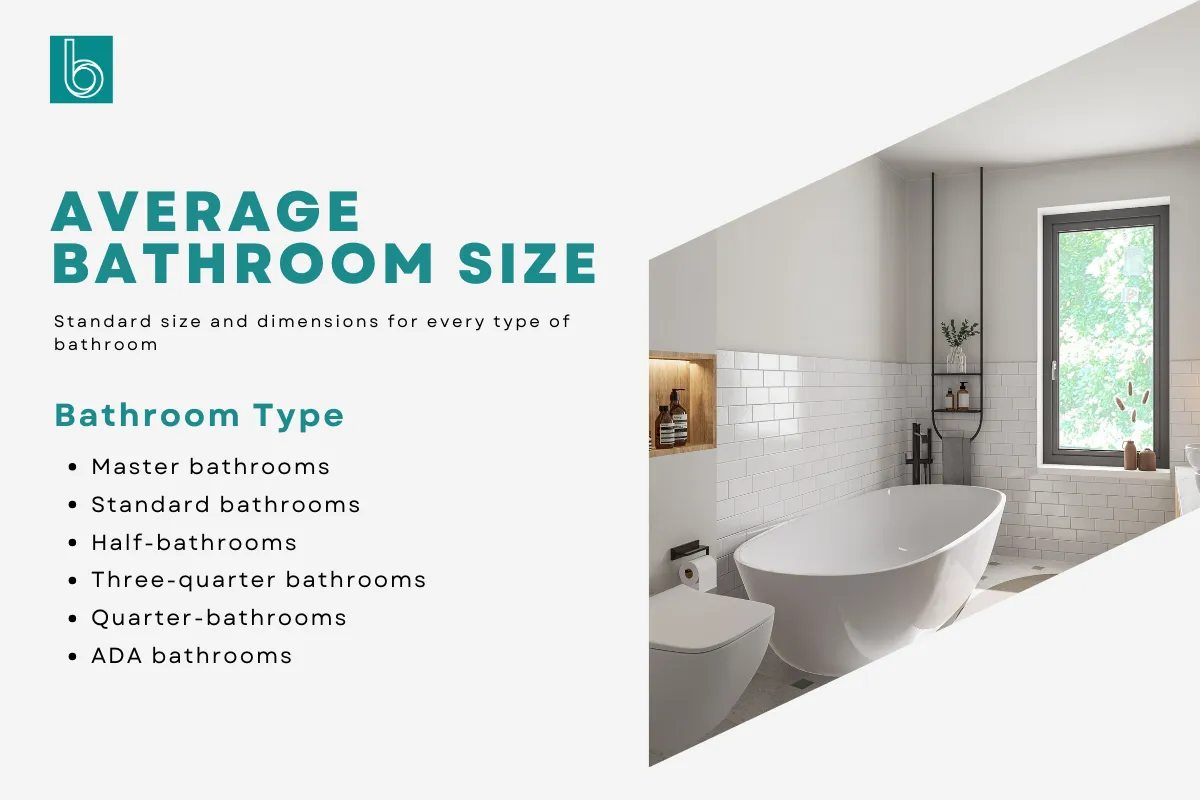
Introduction
This is your ultimate guide on average bathroom size and its sizes and dimensions! Whether you’re renovating or building a new home, understanding bathroom size is crucial. Master bathrooms are key in defining home comfort and luxury. In this post, we’ll explore standard master bathroom dimensions, compare them to other types, and offer insights for effective planning.
Bathroom size matters for comfort, relaxation, and functionality. A well-designed bathroom adds convenience and value to a home. Master bathrooms, being spacious and luxurious, offer a private retreat for rejuvenation.
Standard bathrooms serve basic functions, while master bathrooms offer extra comfort and luxury. Standard bathrooms include essential fixtures like a toilet, sink, and shower or bathtub. In contrast, master bathrooms feature additional amenities like double sinks and spacious showers, catering to homeowners’ specific needs and preferences.
Key Takeaways on average bathroom size:
- An average bathroom size can vary depending on the type of bathroom.
- The average Master bathroom size ranges from 60 to 160 square feet in newer homes and 40 to 60 square feet in older houses.
- The average master bathroom size in meters varies with newer homes ranging from 5.6 to 14.9 square meters and older houses at approximately 7 to 9.3 square meters.
- Standard full bathrooms typically occupy around 40 square feet and include essential fixtures like toilets, showers, bathtubs, sinks, and showers.
- The standard size of a bathroom in meters ranges from 3.3 to 3.7 square meters for a full bathroom.
- Bathroom sizes depend on home age, style, available space, and personal preferences.
The average bathroom size for all types of bathrooms
The average bathroom size can vary depending on the type of bathroom it is. Different types of bathrooms have their standard sizes. Here’s a table showing the standard sizes for each type of bathroom:
| Bathroom Type | Minimum | Standard | Large |
| Master bathrooms | 40 sq ft (3.7 sq m) | 60 sq ft (5.6 sq m) | 160 sq ft (14.9 sq m) |
| Full Bathrooms | 36 sq ft (3.3 sq m) | 40 sq ft (3.7 sq m) | 110 sq ft (10.2 sq m) |
| Three-quarter bathrooms | 18 sq ft (1.7 sq m) | 36 sq ft (3.3 sq m) | 50 sq ft (4.6 sq m) |
| Half bathrooms | 12 sq ft (1.1 sq m) | 18 sq ft (1.7 sq m) | 32 sq ft (3 sq m) |
| Quarter bathrooms | 9 sq ft (0.8 sq m) | 12 sq ft (1.1 sq m) | 15 sq ft (1.4 sq m) |
| Jack and Jill’s bathrooms | 40 sq ft (3.7 sq m) | 65 sq ft (6 sq m) | 100 sq ft (9.3 sq m) |
| ADA bathrooms | 60 sq ft (5.6 sq m) | 100 sq ft (9.3 sq m) | 150 sq ft (13.9 sq m) |
Types of bathrooms with sizes and dimensions
Bathrooms come in various types, each with its own set of sizes and dimensions that cater to different needs and spaces. These diverse types of bathrooms accommodate various needs, preferences, and space constraints within homes. Let’s elaborate on the average bathroom size for every type of bathroom in detail.
Master bathrooms: how big are master bathrooms?
A master bathroom is the largest and most luxurious bathroom in a home, usually attached to the master bedroom as an en suite. It’s designed for the homeowner’s comfort and often features amenities like a toilet, bathtub, shower stall, and double sink.
Average master bathroom size in feet:
- In newer homes, master bathrooms typically range from 60 to 160 square feet, while in older houses, they are typically smaller, ranging from 40 to 60 square feet.
Length and Width in Square Feet:
- Newer master bathrooms: 60 to 160 square feet
- Older master bathrooms: 40 to 60 square feet
Conversion to Meters:
- Newer master bathrooms: Approximately 10.7 to 19.5 square meters
- Older master bathrooms: Approximately 7 to 9.3 square meters
Factors Influencing Master Bathroom Sizes:
- Age and style of the home
- Available space
- Budget constraints
- Personal preferences and lifestyle needs
What To Consider When Thinking About Size Master Bathroom Dimensions:
- Adequate space for essential fixtures
- Comfortable layout for movement and use
- Efficient use of available space
- Incorporation of desired features and amenities without overcrowding.
Standard full bathroom size
Standard full bathrooms are complete spaces equipped with all the features of a master bathroom, such as a toilet, shower, bathtub, sink, and shower. They are known for their versatility and ability to fit into compact spaces, which is why they’re commonly found in metropolitan areas where space is limited.
Standard Dimensions size in Feet and Meters:
- Full bathrooms typically occupy around 40 square feet or 3.75 square meters on average.
Components of a Full Bathroom:
- A full bathroom includes a toilet, shower, bathtub, sink, and shower.
- The shower area may or may not be combined with the bathtub.
- Plumbing is usually confined to one wall, allowing for cost-effective construction.
- A full bathroom situated between two rooms and accessible from both is known as a “Jack-and-Jill” bathroom, often shared between siblings to save space and resources.
Half-bathroom or powder room sizes
Half bathrooms, also called powder rooms, are small spaces usually found near the living area of a house. They typically have only a toilet and sink, offering convenience for daytime guests while maintaining privacy in the rest of the house.
Standard Dimensions in Feet and Meters:
- A typical half bathroom is around 3 feet wide and 8 feet long, totaling about 20 square feet on average(1.8 square meters)
- In older homes, powder rooms can be as small as 11 square feet to about 20 square feet and (1.02 to 1.8 square meters).
Components of a Half Bathroom:
- Half bathrooms usually include a toilet and a sink.
- They’re often the smallest bathrooms in the house and serve as a second bathroom in some homes.
- Powder rooms may also be found in areas like basements, especially in later additions to the home.
Three-quarter bathroom sizes
Three-quarter bathrooms are smaller alternatives to full baths, usually without a bathtub, instead featuring just a standing shower cubicle. They’re often located in guest bedrooms and are designed to take up minimal storage space. These bathrooms typically include a shower, toilet, and vanity, offering functionality while conserving space.
Standard Dimensions in Feet and Meters:
- Typically, a three-quarter bathroom measures around 36 square feet (3.3 square meters) with a configuration of 6 feet by 6 feet.
Components of a Three-Quarter Bathroom:
- These bathrooms typically include a vanity, shower, and toilet, providing enough space for comfortable movement.
Quarter-bathroom sizes
Quarter bathrooms are tiny spaces in homes, usually found in older basements, containing just one fixture: a toilet. They’re also called utility toilets. These bathrooms serve as convenient alternatives for guests or handymen who don’t need a full restroom. They’re extremely compact, typically ranging from 5 to 10 square feet in size.
Standard Dimensions in Feet and Meters:
- Quarter bathrooms are very compact, ranging from 5 to 10 square feet (0.5 to 1 square meter) in size.
Components of a Quarter Bathroom:
- Typically, a quarter bathroom contains only a toilet.
- It serves as a convenient alternative washroom for guests, similar to a powder room.
ADA bathroom size and standards
Designing bathrooms to be accessible to disabled and differently-abled individuals is important. The American Disabilities Act (ADA) has rules for this.
- ADA-approved bathrooms are common in commercial buildings but can also be helpful in homes for disabled or elderly people.
- These bathrooms need plenty of space for movement and turning wheelchairs, without obstacles like doors, toilets, or sinks.
- Fixtures should be installed at lower heights than usual.
- An ADA-compliant half bathroom usually needs around 40 square feet.
- Different types of toilets can be used depending on the person’s disability.
Essential elements for bathroom fittings and sizes
Essential elements for bathroom fittings and sizes include countertop and sink dimensions, toilet clearance space, shower enclosure dimensions, accessories, bathtub size, bathroom door sizes and bathroom lighting ideas. These elements ensure a functional, comfortable, and aesthetically pleasing bathroom design. Let’s elaborate on them in detail.
Countertop & sink dimensions
Countertops and sinks offer a wide range of designs and materials to enhance bathrooms of any size. The standard height for a countertop surface is 34-36 inches from the floor.
Changing the countertop material, like from marble to Moroccan plaster, can refresh the bathroom instantly. In small bathrooms, pedestal sinks save floor space effectively. Sink options vary from modern to rustic styles. Choose a countertop style that complements your sink to create a cohesive look. Wall-mounted sinks provide a minimalist look, while under-mount basins offer seamless integration with the countertop.
- For a single sink, the minimum countertop length needed is 30 inches, while a double vanity requires at least 5 feet.
- Countertop depth typically ranges from 22 to 24 inches.
Standard toilet (WC) dimensions and clearances
The size of a standard toilet doesn’t change much and is based on comfort. Depending on the bathroom size and preference, you can choose between a floor-mounted or wall-mounted unit.
After selecting your toilet, you’ll need at least 30 inches of space in front of it for convenience. Bathrooms now offer advanced sanitation and hands-free technology, with options like the Veil dual-flush toilet or Toto’s Washlet C5.
Adding extras like a bidet, toilet paper holder, or a soft foot mat can enhance comfort. And for a fresh-smelling toilet, consider trying air fresheners recommended by Bustle.
Standard toilet dimensions include:
- Height: 15 inches
- Width: 18 inches
- Length: 27–30 inches, with elongated options for extra comfort
Toilet clearance ensures comfortable access:
- 15 inches from the center of the toilet bowl to the nearest wall or object
- 21 inches from the front of the toilet bowl to the nearest wall or object.
Shower enclosure dimensions
The typical shower height is 72 inches, with the shower head placed at the top. Shower widths are usually 36 inches, but they can be smaller at 32 inches or larger at 48 inches. Shower lengths are also typically 36 inches, but they can vary.
Standard shower clearance is about 24 inches from the edge of the shower to the nearest wall or fixture. Showers offer a chance for creative design.
For cost-effective options, ready-made shower cubicles are available. But if you have the opportunity to design a walk-in shower, there are many possibilities, such as toughened glass panels, patterned tiles, or Corton steel.
Basic shower sizes include 3 feet by 3 feet for a square-shaped shower and 3 feet by 4 feet for a rectangular one. The overhead shower head is consistently placed at 6 feet 6 inches from the floor. Modern shower heads like the Katalyst by Kohler offer a sleek design and advanced technology.
Standard bathtub dimensions & clearances
Bathtubs are symbols of luxury, offering a chance to relax and unwind. A typical bathtub is around 32 inches by 60 inches and 18 inches tall, with 21 inches of space needed in front of it.
All bathtub fixtures should be placed at a reachable height of 33 inches from the ground. When buying a bathtub, it’s best to sit inside to ensure comfort, as replacing one after installation is difficult.
However, modern bathtub designs go beyond these standard dimensions. Options range from classic claw-foot tubs to ones carved from materials like stone or Japanese-style soaking tubs, elevating the bathing experience.
Standard bathtub dimensions include:
- Height: 14-17 inches
- Width: Typically 30 inches, but can vary (narrower or wider)
- Length: Usually 60 inches, but can be shorter or longer
Standard bathtub clearance is around 24 inches from the front edge to the nearest wall or fixture.
Bathroom door sizes and clearances
When putting in a bathroom door, remember these points:
- Typically bathroom door size ranges from 32 inches to 80 inches tall.
- Make sure the door can open without hitting anything like the sink or toilet. Leave at least 4 inches (10 cm) of space between the door and any fixtures.
- The bathroom should have enough space for someone to move around easily. Aim for a walkway width of at least 28 inches (70 cm).
Create a beautiful bathroom design in Blinqlab Direct
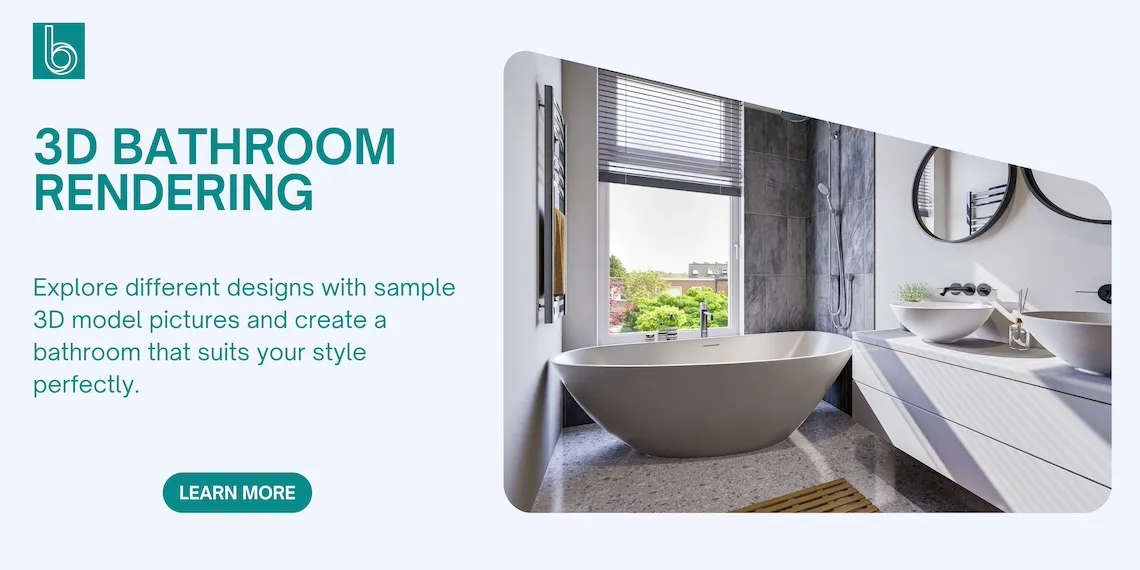 For stunning bathroom designs, explore Blinqlab Direct’s 3D interior rendering service. Our renders and designers make it possible to visualize your dream space with a natural and relevant approach.
For stunning bathroom designs, explore Blinqlab Direct’s 3D interior rendering service. Our renders and designers make it possible to visualize your dream space with a natural and relevant approach.
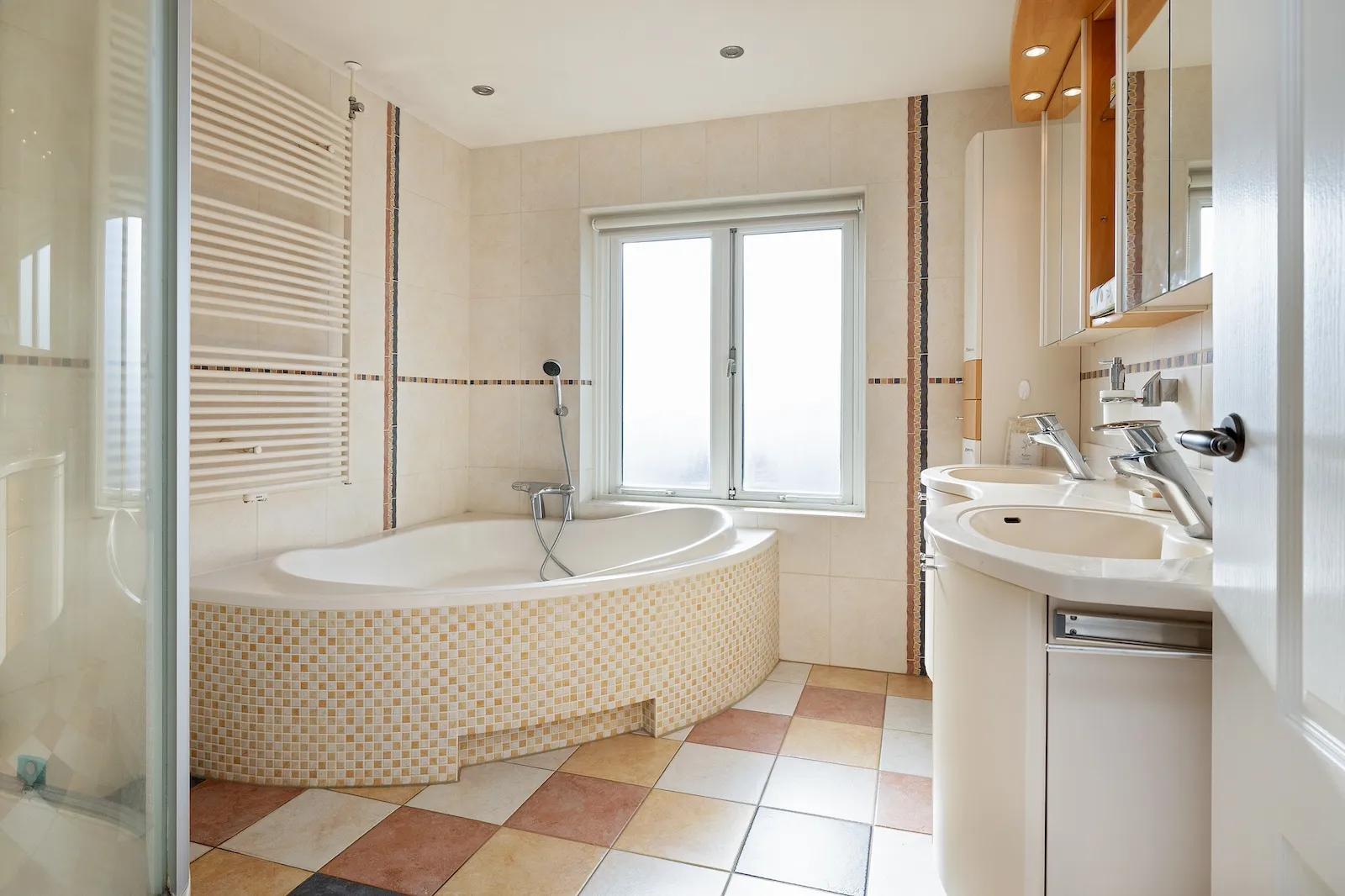
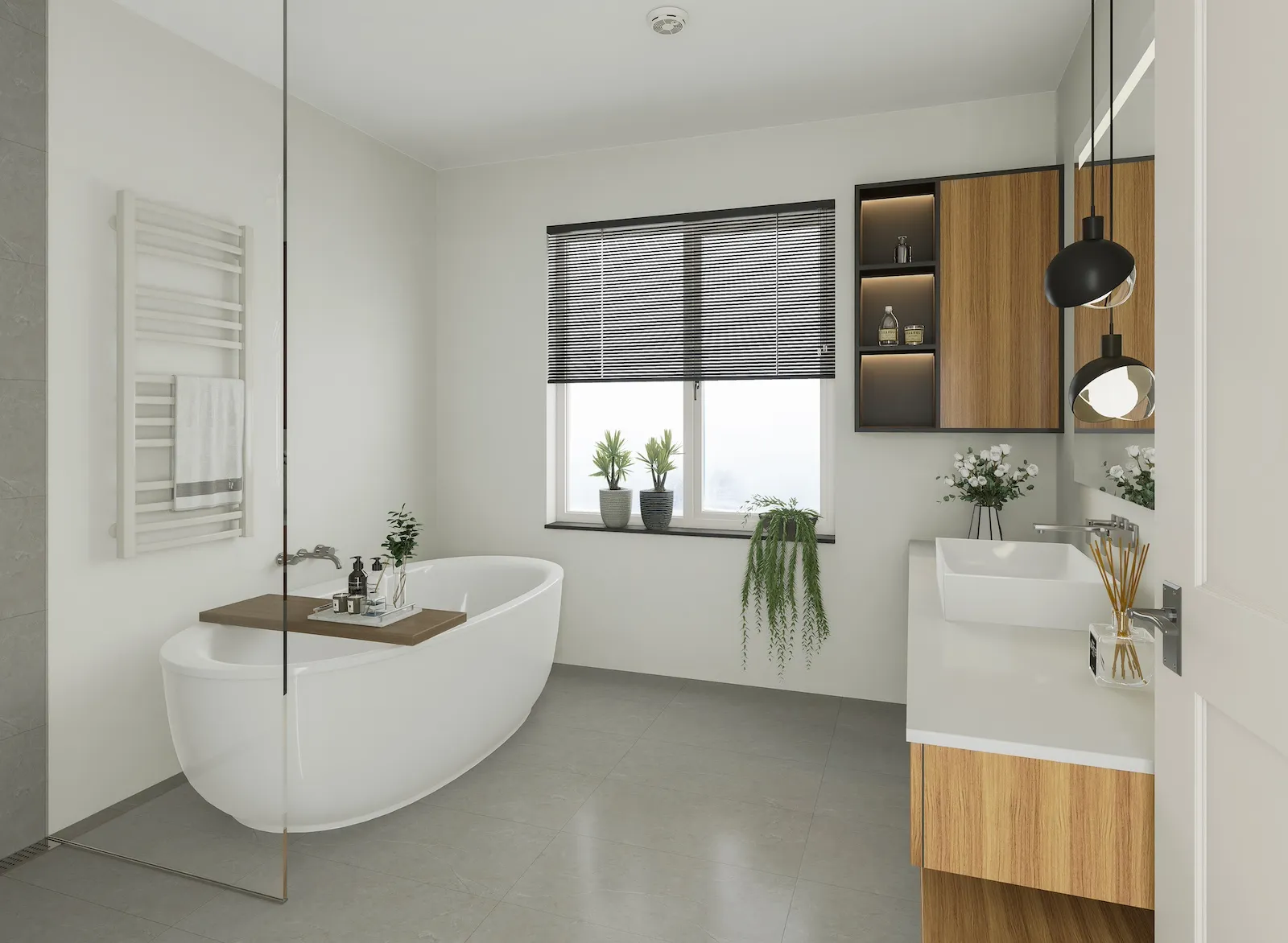
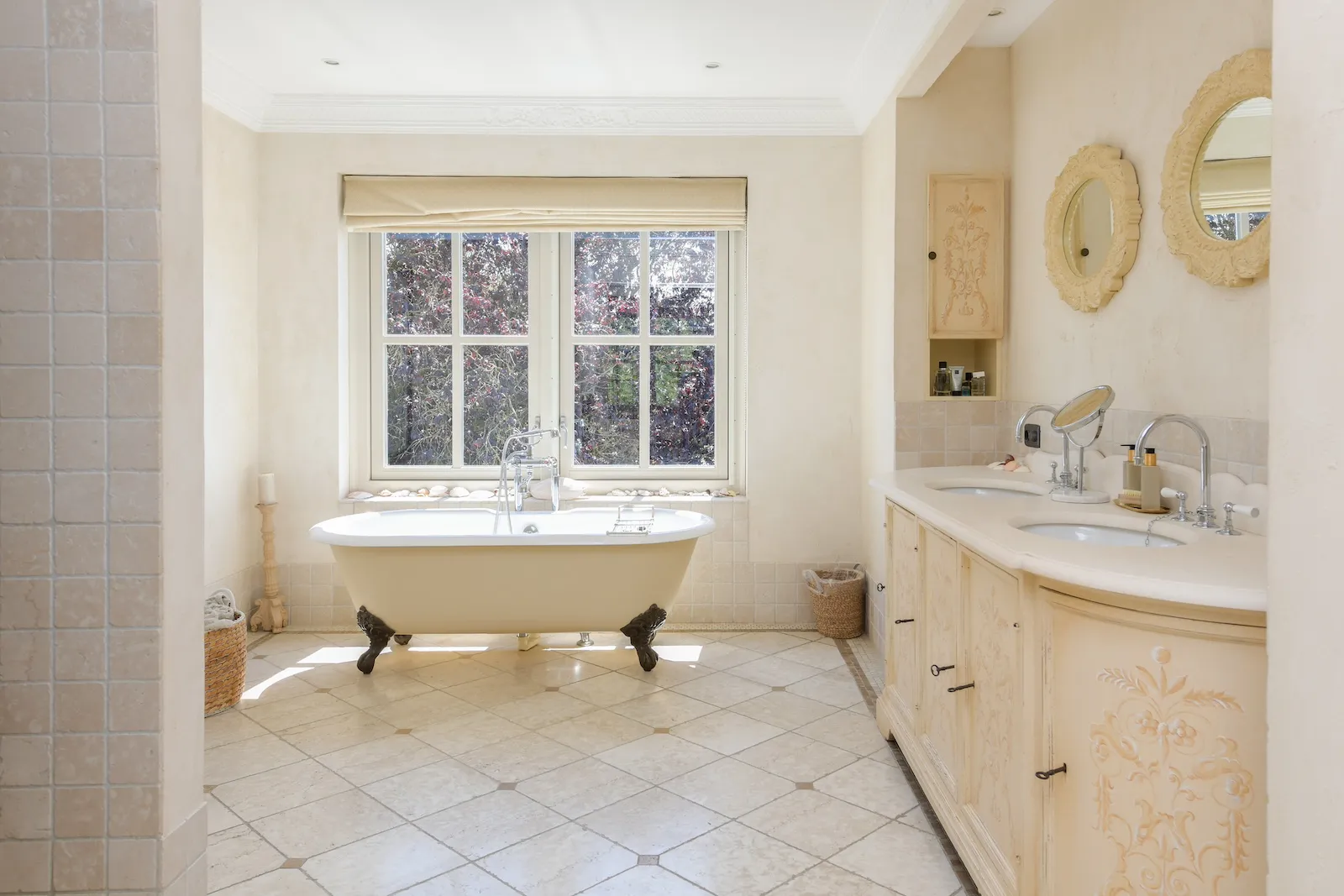
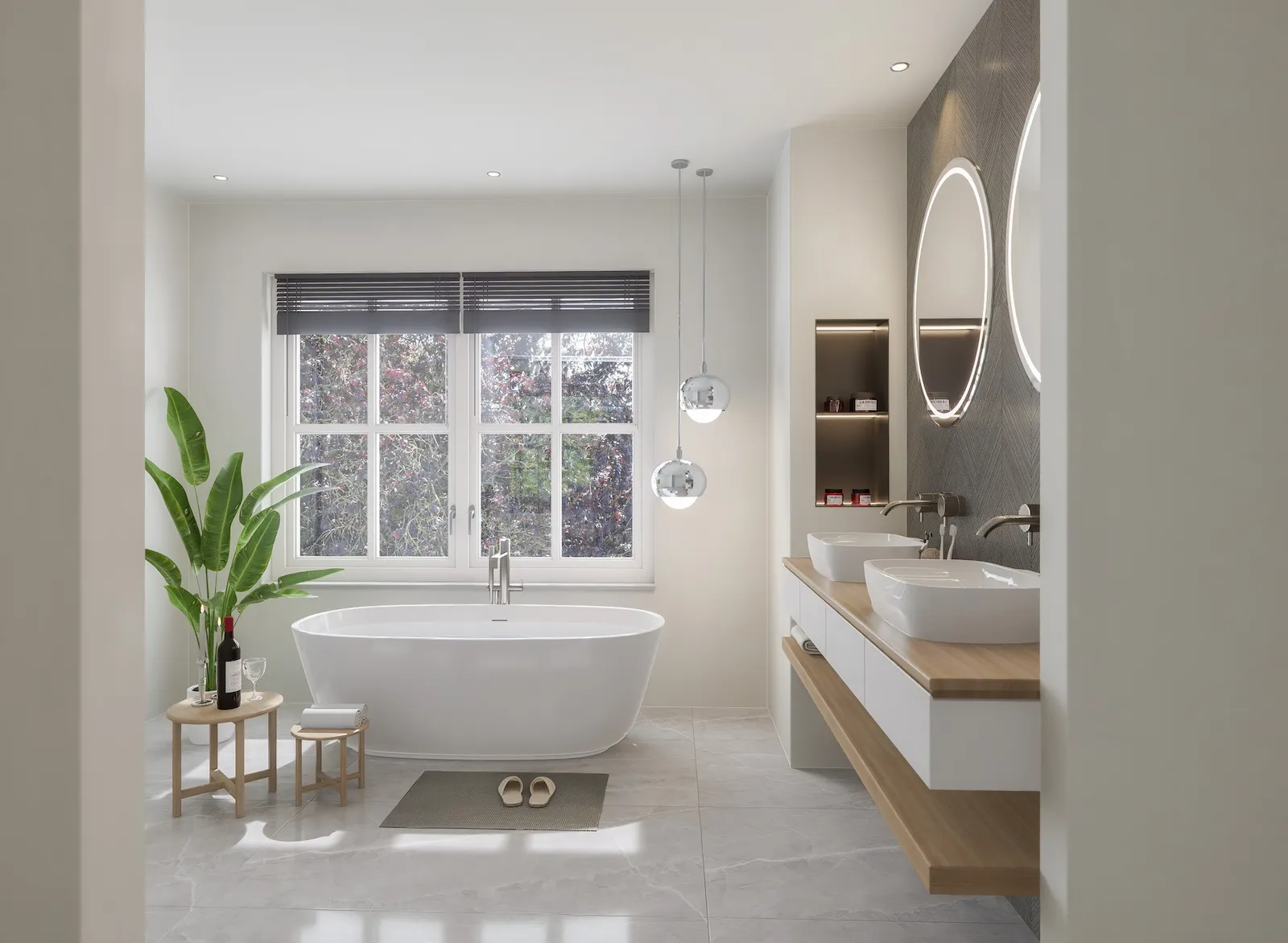
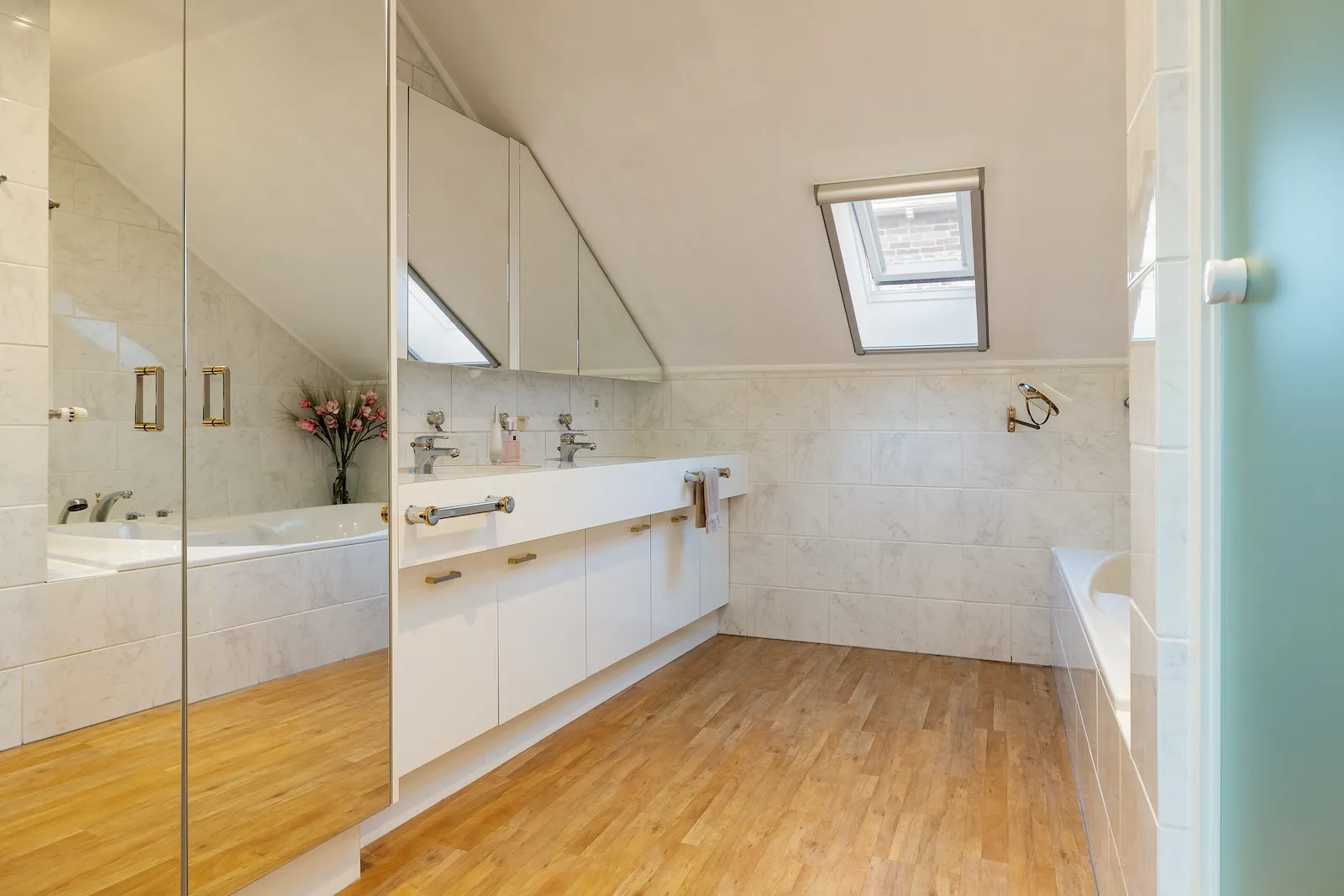
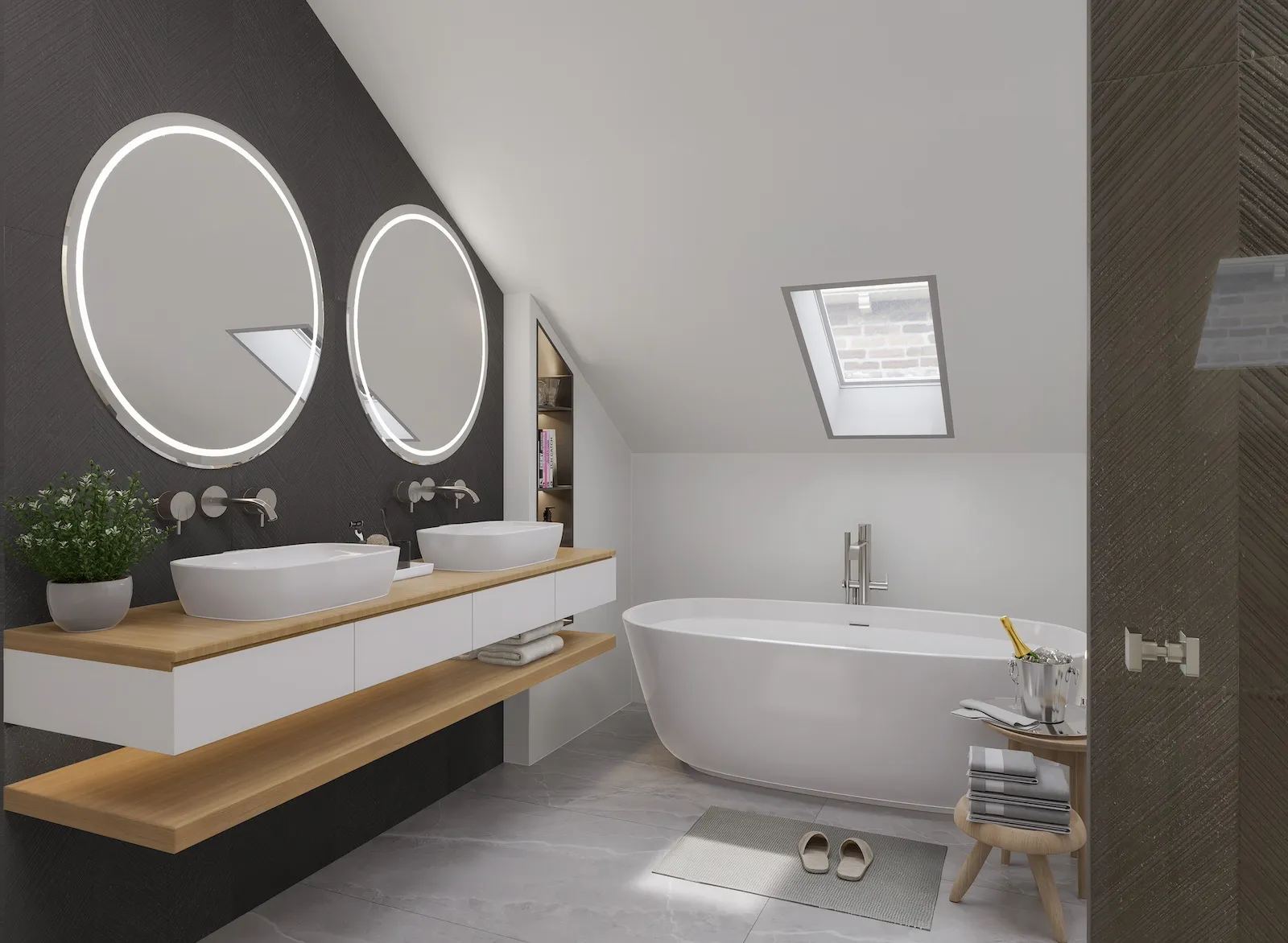
Explore more about Our 3D Rendering Services:
Conclusion
Understanding master bathroom sizes and dimensions is crucial for any renovation or construction project. From spacious master bathrooms to compact powder rooms, each type serves a unique purpose based on space availability and functionality requirements.
Considerations such as textures, countertop dimensions, toilet clearances, and shower enclosure sizes are essential for effective planning and design. With services like Blinqlab Direct’s 3D rendering, you can bring your bathroom visions to life with ease. Regardless of your goal; luxury or practicality, careful planning and attention to detail guarantees a bathroom that suits your needs perfectly.
